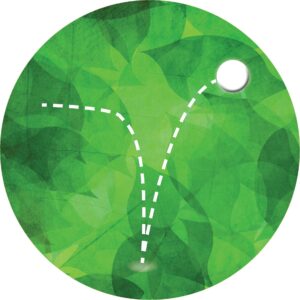 One of the most challenging and crucial questions of our time is why some bounce back from adversity, seemingly unscathed, while others fall apart and become emotionally distraught and dysfunctional.
One of the most challenging and crucial questions of our time is why some bounce back from adversity, seemingly unscathed, while others fall apart and become emotionally distraught and dysfunctional.
Once upon a time and not too long ago, the dominant idea regarding stress was that it was what happened to us that told the story. Sexual abuse had its consequences. Trauma had its crippling effects. Divorce had its fallout. Stress, in sufficient amounts, would lead to our undoing. The corollary to this idea is that good experiences (or the absence of adversity) would ultimately lead to emotional health and well-being. It turns out that neither hypothesis holds water. There are too many exceptions to create a rule in either case.
What has become apparent is that it is not what happens to us – good or bad – that explains how we are ultimately affected, but rather something about ourselves that sets the stage for the story that unfolds. But what is this ‘something?’ Do some have it and others not? Or does everyone possess it, but it somehow needs to be activated for the potential to be realized?
The pieces of the puzzle are finally coming together, and the answer lies in this remarkable human attribute called resilience: the ability to bounce back. Resilience is the ultimate good news story – telling us that stress in itself is not the enemy and that we need not be brought down by the circumstances in our lives. After years of mistaken emphasis on the stress part of the equation, the focus is now on uncovering the keys that can unlock the amazing human potential to grow through adversity, to thrive under duress, and to bounce back from trauma.
Resilience is probably the most important topic of our time. It holds the answers to emotional health and well-being, mental illness, healing and recovery, prevention, addiction, and much more. Not only is resilience the best overall prevention, but also the best focus for intervention. Resilience should be everyone’s concern – not only the medical and helping professionals, but also educators, parents, and society at large. Resilience is about ourselves and those we are responsible for.
The implications are profound. Instead of treating trauma, disorder, and illness, we should be focused on restoring the capacity for resilience. Instead of worrying about what will befall us or our children, we should nurture resilience as our best insurance for their well-being in a world that we cannot control.
So how do we nurture this attribute in ourselves, in our loved ones, in our students, and in our clients? Everything depends upon knowing what resilience actually is, what it looks like at rest and at work, and how to set the stage for this transformative process.
Although the human capacity for resilience is remarkable, it is also somewhat mysterious and even luxurious. Resilience is spontaneous, but certainly not inevitable. Everyone possesses the potential for resilience, but only some come to realize it. It cannot be commanded and is not a skill to be learned. Resilience is not genetic and there is no pill that can deliver it. Resilience, therefore, lies outside the parameters of both of the prevailing approaches for explaining human behaviour – the medical disease model, as well as the learning paradigm.
So where does resilience come from and how are we to make sense of it? Surprisingly, the answers lie in fresh understandings of emotion, feelings, play, and rest. These pivotal factors have unfortunately been eclipsed by the prevailing focus on symptoms, syndromes, and stress, as well as problem behaviour and dysfunction. The story of emotional health and well-being is not about what has happened to us but rather about what hasn’t happened within us.
I shall try to tell the story in a nutshell, although I much prefer the space of a course to flesh it all out, or at least a keynote to set the stage. The story of resilience starts with an understanding that optimal functioning is characterized by a sense of playfulness, restfulness, and feelingfulness. (I’ve made up that word because we desperately need a construct like this.) The problem with stress is that it typically robs us of these elusive states. So how are we to recover these qualities once they have been lost? The answer to that question is the holy grail of healing, recovery, and emotional well-being.
When the dots are joined, it appears that the return of these qualities can only happen when we have sufficient access to our sadness, some safety, and enough inner strength to not run away from adversity. Of crucial importance is the understanding that we are much more likely to sense these things when in a context of safe relationship or in true play. But the story doesn’t end here. Resilience, it turns out, requires us to take an emotional journey – a trip, as it were, through the metaphorical seasons of an emotional Fall, Winter, and Spring. The secret of the emotional bounce-back is in the emotional let-down that precedes it. We only lighten up once the heaviness has been somewhat embraced. Our challenge, therefore, is in the preparation for this journey, as well as in giving the support it requires.
In a world where we cannot control what happens, nothing could be more important than resilience – when we’re caring for our students, our clients, our loved ones, and ourselves.
